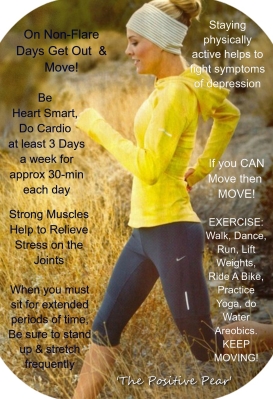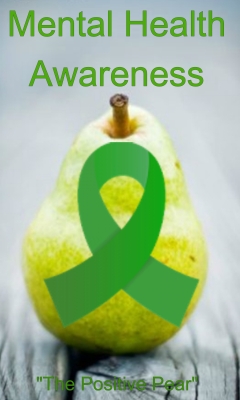 Amino Acids are protein building blocks and proteins are the building blocks of life itself. There are 20 which are crucial to human heath, relating to growth, repair, and maintenance of body tissues. Nine of these amino acids are considered essential and required through proper nutrition, which will enable the body to produce the required protein. These are: leucine, isoleucine, valine, lysine, threonine, tryptophan, methionine, phenylalanine and histidine. The eleven non-essential amino acids are arginine, alanine, asparagine, aspartic acid, cysteine, glutamine, glutamic acid, glycine, proline, serine, and tyrosine.
Amino Acids are protein building blocks and proteins are the building blocks of life itself. There are 20 which are crucial to human heath, relating to growth, repair, and maintenance of body tissues. Nine of these amino acids are considered essential and required through proper nutrition, which will enable the body to produce the required protein. These are: leucine, isoleucine, valine, lysine, threonine, tryptophan, methionine, phenylalanine and histidine. The eleven non-essential amino acids are arginine, alanine, asparagine, aspartic acid, cysteine, glutamine, glutamic acid, glycine, proline, serine, and tyrosine.
Many non-essential amino acids may not be required for protein building, but through much research it has been discovered that they are instrumental in healing and relieving symptoms of many conditions, thus used therapeutically. Many with chronic health conditions often have deficiencies of both essential & non-essential amino acids. Conditions and symptoms such as, Allergies, Ulcers, Anemia, Osteoarthritis, Autoimmune Arthritis such as Rhumatoid Arthritis & AS, lupus, cerebral palsy, certain cancers, depression, cognitive issues, insomnia, anxiety, panic attacks, associated with CFIDS (chronic fatigue and immune dysfunction syndrome), musculoskeletal pain and discomfort associated with Fibromyalgia, Ankylosing Spondylitis, IBD, ADD (attention deficit disorder) & ADHD (attention deficit hyperactivity disorder), as well as others. Amino acids work synergistically with many drugs and treatments, so interactions are not ordinarily a concern, but if you have decided to supplement with amino acids, your doctor should be informed. A few Therapeutic aminos are L-histidine, L-Carnitine, L-Taurine & L-Tyrosine. L-Trosine is often low in individuals battling depression, as well as those suffering with kidney disease. L-Theanin is found in green tea and is said to help relieve the symptoms of stress and anxiety, while enhancing focus and concentration. Which is perfect for those who are cognitively challenged, as with ADD & ADHD, Chronic Fatigue & Fibromyaglia.
Nine of the essential amino acids can be found in protein rich foods such as red meat, poultry, seafood and dairy products. Plant foods, such as vegetables, fruits and grains, will only provide some of the nine essential amino acids. For this reason, a vegetarian diet should be balanced to ensure that amino acids are derived from all parts of the diet. Vegetable sources of protein such as nuts, beans, and grains are incredibly healthy, because they not only provide amino acids, but additional nutrients such as fiber, vitamins A and C.
If you are able to eat and digest protein rich foods such as meat, poultry, seafood & dairy products then you are more than likely getting your required amounts of amino acids. However keep in mind that many chronic health conditions can prevent absorption of many vitamins, minerals and amino acids through food intake, so supplementing might be required. Since our protein requirements are actually lower than most people consume, below are many fruit & vegetables sources of amino acids which you can easily add to your existing diet:
PLEASE NOTE: This is not a low-starch or low-carb food friendly list, rather its to provide overall information on foods which are high in amino acids.
Alanine – Main source being alfalfa, but also found in: celery, carrot, lettuce, cucumber, turnips, green pepper, spinach, plums, apples, guavas, grapes, oranges, almonds and strawberries.
Arginine – alfalfa, carrots, green leafy vegetables, beetroots, cucumber, celery, lettuce, radishes and potatoes.
Aspartic acid – carrots, celery, radishes, cucumber, mint, tomatoes, turnips, lemons, grapefruit, apples, plums, pineapples, melons and almonds.
Cystine – alfalfa, beet roots, carrots, cabbages, cauliflower, onions, garlic, apples, pineapples, raspberries, raisins.
Glutamic acid – found in carrots, turnips, cabbages, celery, beetroots, mint, lettuce, spinach and papaya.
Glycine – carrots, turnips, celery, mint, alfalfa, spinach, garlic, potatoes, figs, oranges, raspberries, pomegranates, melons and almonds.
Histidine – radishes, carrots, cucumber, beetroots, celery, garlic, onions, turnips, alfalfa, spinach, pineapples, apples, pomegranates and papaya.
Hydroxy glutamic acid – carrots, mint, lettuce, spinach, tomatoes, grapes, raspberries, plums.
Hydroxy praline – carrots, lettuce, beetroots, turnips, cucumber, plums, cherries, figs, radishes, grapes, olives, pineapples, almonds and coconut.
Lodogorgoic acid – carrots, celery, spinach, tomatoes, lettuce and pineapple.
Isoleucine – papaya, olives, coconuts, almonds, apricots, pistachios and walnuts.
Leucine – coconuts, almonds, apricots, papaya, olives, pistachios and walnuts.
Lysine – carrots, cucumber, beetroots, mint, celery, spinach, turnips, alfalfa, germinates soyabeans, plums, pears, papaya, apple and grapes.
Methionine – cabbages, garlic, cauliflower, pineapples and apples.
Norleucine ( NLE a form of lucine)
Phenylalanine – carrots, beetroots, spinach, mint, tomatoes, pineapples and apples.
Proline –carrots, beetroots, lettuce, turnips, cucumber, plums, cherries, figs, grapes, olive, oranges, pineapples, coconuts and almonds.
Serine –radishes, garlic, onion, carrots, beetroots, celery, cucumber, mint, spinach, cabbage, alfalfa, papaya, apples and pineapples.
Threonine – carrots, green leafy vegetables, alfalfa and papaya.
Thyroxine – carrots, celery, lettuce, turnips, spinach, tomatoes and pineapples.
Tryptophane – beetroots, carrots, celery, spinach, alfalfa and turnips.
Tyrosine – alfalfa, carrots, beetroots, cucumber, lettuce, mint, spinach, green pepper, plums, strawberries, cherries, apples, melons, figs and almonds.
Valine – carrots, turnips, sweet gourd, celery, mint, beetroots, tomatoes, apples, pomegranates and almonds.
When supplementing look for free form amino acids and you’ll want products with a full amino acid profile, many will read “amino acid complex.” such as with protein powders or protein drinks. Amino acids work synergistically with vitamins and minerals, thus working naturally with our bodies. Though it is preferred that we obtain vitamins, minerals, as well as amino acids through our diet, when we are chronically sick or have malabsorption issues such as those related to chronic inflammation & IBD, supplementing just might be required. Be careful of taking excessive amounts of amino acids and be sure to follow label instructions.

Braggs Liquid Aminos
Food based Amino Acid Supplements: Braggs Liquid Aminos NON-GMO soy (contains 16 amino acids/8 essential.) This product is great to use in place of regular and potentially GMO contaminated soy sauce. Should not be cooked or heated.

Coconut Aminos
Coconut Aminos by Coconut Secrets contains 17 naturally occurring amino acids. Nutrient-dense, certified organic, dairy free, gluten-free, soy-free and raw-vegan friendly.
By ensuring that you are eating foods that are high in amino acids, or that you are supplementing via a well balanced protein powder or free form amino acids, you are improving your chances for optimal health, greater energy, strength, recovery, improved muscle definition, beautiful skin, better mood, better memory and enhanced brain function. Incredibly beneficial in combating fibrofog, pain and stiffness relating to Ankylosing Spondylitis and the multitude of symptoms associated with Chronic Fatigue and Immune Dysfunction Syndrome, including depression.
Amino Acids, Angelo P John research based on amino acid cancer therapy, amino acid, amino food guide courtesy of Naturopathy for Perfect Health. The Healing Power of Organic, Real Food, Superfoods & Whole Foods, Nutritional, Gluten-Free, Diary-Free, Low-Starch & Inflammation Friendly Recipes






 Amino Acids are protein building blocks and proteins are the building blocks of life itself. There are 20 which are crucial to human heath, relating to growth, repair, and maintenance of body tissues. Nine of these amino acids are considered essential and required through proper nutrition, which will enable the body to produce the required protein. These are: leucine, isoleucine, valine, lysine, threonine, tryptophan, methionine, phenylalanine and histidine. The eleven non-essential amino acids are arginine, alanine, asparagine, aspartic acid, cysteine, glutamine, glutamic acid, glycine, proline, serine, and tyrosine.
Amino Acids are protein building blocks and proteins are the building blocks of life itself. There are 20 which are crucial to human heath, relating to growth, repair, and maintenance of body tissues. Nine of these amino acids are considered essential and required through proper nutrition, which will enable the body to produce the required protein. These are: leucine, isoleucine, valine, lysine, threonine, tryptophan, methionine, phenylalanine and histidine. The eleven non-essential amino acids are arginine, alanine, asparagine, aspartic acid, cysteine, glutamine, glutamic acid, glycine, proline, serine, and tyrosine.
